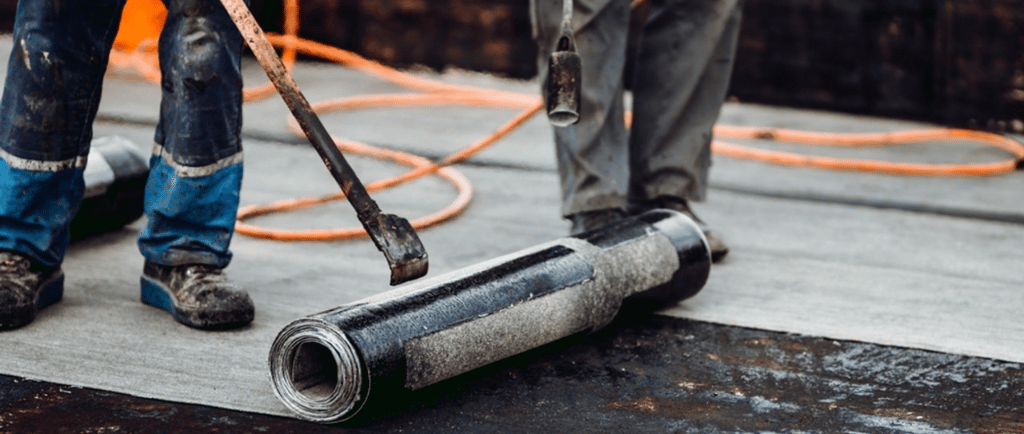4. Bituminous Waterproofing
Bituminous Waterproofing is one of the most commonly used methods for protecting structures against water infiltration, especially for areas that are exposed to moisture or underground conditions. It involves the use of bitumen-based materials (such as asphalt or tar) to create a protective barrier on surfaces.


Bituminous Waterproofing:
Key Features of Bituminous Waterproofing
Bitumen Composition: Bitumen is a naturally occurring petroleum product that has waterproofing and adhesive properties. It is typically modified with additives like polymers or rubber to enhance its performance.
Durability: Bituminous materials are highly durable, resistant to water, and effective in extreme weather conditions, making them ideal for long-term protection.
Flexibility: While the base material (bitumen) is generally rigid, when modified (e.g., with SBS—styrene-butadiene-styrene—polymers), the bitumen can achieve flexibility, which is important for handling temperature fluctuations and surface movement.
Types of Bituminous Waterproofing
Hot-Applied Bituminous Waterproofing
Process: In this method, bitumen is heated to a high temperature (typically 160-180°C) and applied as a liquid directly to the surface. Once cooled, it forms a solid, seamless waterproof membrane.
Applications: Ideal for large surface areas like roofs, terraces, and foundations.
Advantages: Excellent adhesion to surfaces, forms a thick protective layer, highly durable.
Disadvantages: Requires special equipment to heat bitumen, can be labor-intensive, and requires safety precautions due to high temperatures.
Cold-Applied Bituminous Waterproofing
Process: Cold-applied bituminous waterproofing uses pre-manufactured sheets or membranes that have a self-adhesive layer. These membranes do not need heating and can be applied directly to the surface.
Applications: Suitable for surfaces like foundation walls, roofs, and underground structures.
Advantages: Easier to apply than hot-applied, safer (no need for heating), faster installation.
Disadvantages: Generally, the membrane thickness is thinner than hot-applied, which may impact long-term durability in certain conditions.
Common Bituminous Waterproofing Materials
Bitumen Membranes: These are prefabricated sheets made from bitumen, which can be either self-adhesive (cold-applied) or torch-applied (hot-applied). The membrane is typically reinforced with polyester or fiberglass for added strength.
Bituminous Coatings: These are liquid bitumen products that can be brushed or sprayed onto surfaces. They provide a waterproof barrier but may need to be applied in multiple coats for greater durability.
Bituminous Primer: Used as an undercoat to prepare surfaces before applying a bituminous waterproofing membrane or coating. It enhances the adhesion of the membrane to the surface.
Applications of Bituminous Waterproofing
Roofing:
Bituminous membranes are widely used for waterproofing flat roofs, especially in commercial and residential buildings. The membranes provide a durable and UV-resistant layer to protect against water infiltration.
Foundations and Basement Walls:
Bituminous coatings and membranes are effective in protecting the foundations and basements of buildings from water ingress, especially in areas with high water tables or frequent rain.
Underground Structures:
Bituminous waterproofing is commonly used for tunnels, subways, and other underground structures where water protection is critical.
Terraces and Balconies:
These areas often face water damage due to rainwater or moisture exposure, and bituminous waterproofing ensures that water does not seep into the structure.
Bridges and Infrastructure:
Bituminous materials are used to protect bridges and other infrastructure from water, which could cause corrosion and deterioration.
